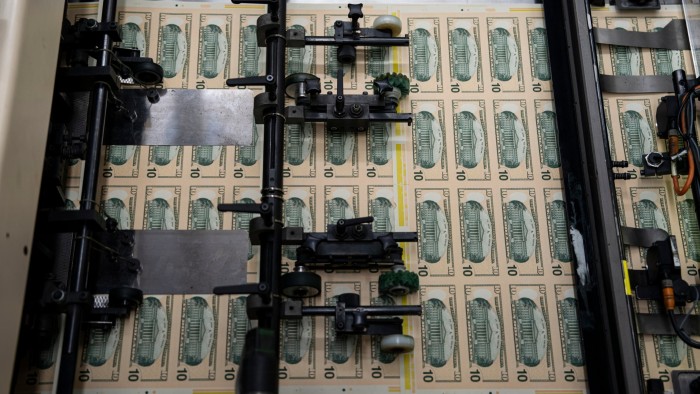Unlock the Editor’s Digest for free
Roula Khalaf, Editor of the FT, selects her favourite stories in this weekly newsletter.
Investor jitters about the state of the US public finances have put the dollar on track for its worst week since President Donald Trump’s “liberation day” tariffs announcement rocked markets at the beginning of April.
The US currency was down 0.5 per cent on Friday against a basket of peers including the euro and the yen. The move took its decline so far this week to 1.6 per cent, its biggest drop for six weeks, as Trump’s tax bill adds to fears over rising US debt levels. That has come as some investors question whether to reduce their huge overweight positions in dollar assets, on concerns about erratic policymaking and the president’s trade war.
“Lingering fears over the quality of US asset markets and the threat of de-dollarisation are continuing to weigh on the dollar,” said Chris Turner, global head of markets research at ING.
He cited recent data indicating outflows from US assets, as well as a statement from G7 finance ministers on Thursday that mentioned “unsustainable global macro imbalances”.
That “looked a clear reference to the large Asian trade surpluses with the US”, said Turner.
Bets that some Asian countries might make trade agreements with the US that include measures to strengthen their foreign exchange rates against the greenback have supported a string of currencies including the Korean won and Taiwanese dollar in recent weeks.
“Renewed investor concerns over the US fiscal outlook, alongside speculation that the Trump administration is seeking to weaken the dollar in discussions with other countries, have contributed to the sell-off,” said Lee Hardman, senior currency analyst at banking group MUFG.
Investor anxiety that Trump’s tax-cutting bill could worsen the US deficit has fuelled a sell-off in long-term US debt this week, dragging other markets lower.
That has pushed the 30-year Treasury yield up 0.13 percentage points this week above 5 per cent.
“Investors’ concern over the escalating US fiscal burden is slowly building,” said analysts at BBH.
The dollar has slid this year as investors have grown concerned about the impact of Trump’s sweeping tariffs on the US economy. That has included periods of falling at the same time as US government bonds and stocks are dropping, which has been taken as a sign of investors shedding dollar assets. Typically, higher yields increase the attractiveness of dollar assets.
“The thing that’s most troubling is how the dollar is reacting to high US rates,” said Michael Metcalfe, head of macro strategy at State Street Global Advisors.
“When currencies and bond prices move in the same direction, that’s reflecting a dent in policy sustainability,” he added, saying the break in usual correlations “makes you think there is something more structural at play”.
Analysts at RBC BlueBay Asset Management said they expected the dollar weakening to continue as investors look to hedge their exposure to the greenback in the short term and rethink a “structural overallocation” to the US in the longer term.
https://www.ft.com/content/04deb2ec-5bb1-4c7c-94bb-6f62582a0032


